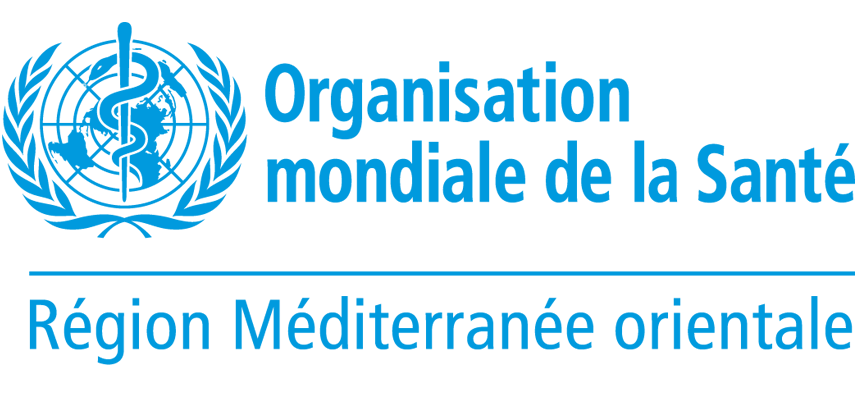Story of Muhdia: Health services in Syria support hundreds of TB patients
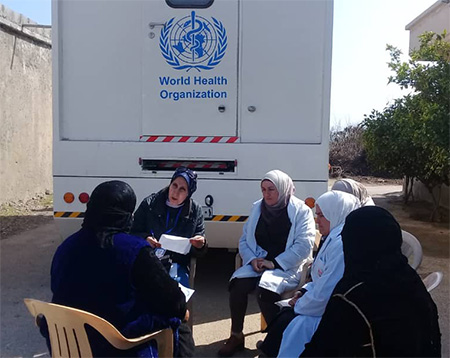 27 March 2022 - 25-year-old Muhdia from Karm Myasser district in Aleppo, Syria, was diagnosed with tuberculosis (TB) after being examined by the TB mobile clinic. Muhdia was losing weight, coughed frequently, had fever and difficulties in breathing. Thanks to the agility of physicians, she was immediately referred to the TB centre in Aleppo where doctors started the treatment and explained the importance of taking medication for the next two years for the full recovery.
27 March 2022 - 25-year-old Muhdia from Karm Myasser district in Aleppo, Syria, was diagnosed with tuberculosis (TB) after being examined by the TB mobile clinic. Muhdia was losing weight, coughed frequently, had fever and difficulties in breathing. Thanks to the agility of physicians, she was immediately referred to the TB centre in Aleppo where doctors started the treatment and explained the importance of taking medication for the next two years for the full recovery.
After three months of intensive multiple drug-resistant treatment, Muhdia started recovering. She became pregnant and for the fear of harming an unborn baby, she initially refused to continue the treatment.
“I was panic-stricken at the thought of losing my baby,” said Muhdia.
TB professionals convinced her to maintain the treatment and observe any side effects. The centre also provided follow up services at Muhdia’s home. She has delivered a healthy child and has been continuing her treatment.
“Thanks to the treatment and supportive health professionals, I feel much better, and my baby is healthy. It helped me get through a time of great worry and uncertainty,” Muhdia said.
Since the Aleppo TB centre reopened in 2018, it has admitted many patients. The centre, which is the only health care facility in Aleppo governorate that specializes in treating TB, provides free diagnosis and treatment services to patients from four neighbouring governorates in northern Syria.
The daily operation of the centre and of the mobile clinics is supported by WHO through the contribution of the Global Fund to Fight AIDS, TB and Malaria, while the Government of Japan supported the rehabilitation. TB services, including diagnosis, treatment and awareness sessions, are provided to internally displaced people and other vulnerable populations in emergency response areas, as well as penitentiary facilities since March 2020. Since then, more than 78 606 people throughout the country have benefited from the services of mobile clinics, and 180 TB cases have been diagnosed in Aleppo alone.
In 2021, over 685 people with TB in Aleppo were diagnosed and offered treatment. WHO also helps provide financial aid and food baskets to support TB patients and their families during their treatment journey.
“WHO is committed to facilitate active case-finding to identify people with the disease and give them the help they need,” said Dr Akjemal Magtymova, Head of Mission and WHO Representative in the Syrian Arab Republic. “As low as the TB prevalence in Syria might be, the pre-conditions for contracting TB are quite high. Undernutrition, poverty, HIV, diabetes and tobacco are among the key drivers of the TB epidemic. I believe that with joint efforts elimination of TB is possible,” Dr Akjemal Magtymova added.
WHO champions women’s right to health in Syria
Dr Akjemal Magtymova, Head of Mission and WHO Representative in Syrian Arab Republic
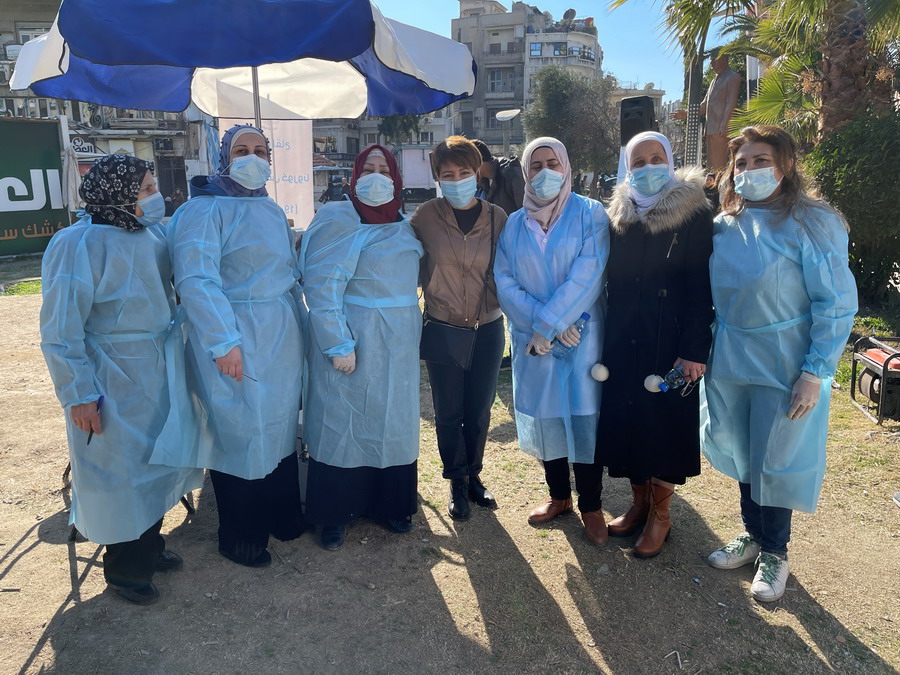
On Mother’s Day, I would like to shine a spotlight on the extraordinary resilience and leadership of Syrian women – daughters, sisters, mothers, grandmothers. For the last 11 years since the start of the crisis in Syria, women have faced many challenges, yet firmly continue to contribute to health, well-being and the advancement of their own families, communities and the country at large.
Women constitute over half of the Syrian population. Over six million women are in need of health support. The majority of internally displaced people (IDPs) in camps and formal and informal settlements are women and children. Almost every third family is headed by a woman, assuming the role of a caretaker and breadwinner, thus significantly contributing to the economy, society and family. Women in Syria have contributed to humanitarian efforts, and in the last two years, have taken a leading role in responding to the COVID-19 pandemic.
There has been increasing recognition of the critical role of health care leadership by women, though more effective and sustained investment in the development of future female health care leaders is critical. Throughout my two-year presence in Syria, I have seen many women leaders who are ardent about providing live-saving health services, promoting healthy lifestyles, and driving change and innovation in health. Be it as leaders in the COVID-19 vaccination roll-out; leaders in strategic health sector planning; leaders in national, regional and global health research; leaders in preventing tobacco use and promoting healthy living; leaders in health education and family affairs; leaders in polio immunization; or nurses, community leaders and influencers – all these women have gone the extra mile to ensure health for all.
The World Health Organization (WHO) in Syria has mainstreamed gender equality in its programming and together with national and international health partners makes every effort to ensure that every woman enjoys her right to the highest attainable standard of health, which includes the right to dignified, respectful health care throughout pregnancy and childbirth, the right to be free from violence and discrimination, and the right to health information to enable women and girls to make informed decisions about their health and to benefit from the services they need.
Through our rights-based and evidence-based humanitarian programming, through resilience and recovery efforts, and through supporting national strategies such as the National Strategy for Women, Children and Adolescents Health in the Syrian Arab Republic (2020-2025), we continue our commitment to the advancement of the health of women.
Some of the flagship areas where WHO makes tangible stride for women’s health are reproductive and maternal health, mental health, the prevention of gender-based violence, and the prevention of and response to sexual exploitation and abuse.
In response to the reproductive health needs of women within Syria’s humanitarian settings, WHO and UNFPA established and co-lead the sub-working group to enable efficient coordination among implementing agencies and relevant stakeholders in the country. The fertility rate in Syria was registered as 2.7% per woman in 2021, which is a reduction since 2010 (3.4%). Significant reproductive health needs remain in a county with limited health capacity for the provision of adequate services and a severely depleted health care workforce. WHO supports hospitals in Syria, including in north-east Syria, in providing normal and C-section birth deliveries, as well as in the capacity-building of medical and nursing professionals responsible for family planning, safe maternal and newborn care.
The prevention of and response to gender-based violence across the health sector in Syria has been institutionalized by WHO since 2018. We provide critical, time-sensitive interventions that prevent, mitigate and treat some of the health consequences of gender-based violence and connect survivors to services that improve their well-being. Mental health and psychosocial support services are a critical entry point for helping gender-based violence survivors and, as such, WHO has gradually introduced these services into health and community facilities in recent years rather than presenting them as isolated projects. Together with partners we raise awareness about violence against women, promote gender equality and women’s human rights and combat stigma and discrimination.
WHO also champions women’s rights within its workplace. Our Organization is equally represented by women and men, shouldering equal burdens and getting paid equally for work of equal value. We actively contribute to the UN Interagency Gender Working Group and to the country, regional and global network for the Prevention and Response to Sexual Exploitation, Abuse and Harassment (PRSEAH). WHO is taking the issue of PRSEAH very seriously, and bringing new insights to this agenda.
As we continue supporting gender mainstreaming in the health sector through research, policy formulation and capacity-building, we draw our inspiration and strength from the women of Syria, who together with other members of society, drive gender transformative changes in achieving universal health coverage and health for all. I wish Happy Mothers’ Day to all mothers in Syria and across the world and thank you for your determination and commitment to build a better world.
WHO and Syria combine efforts to raise COVID-19 vaccine accessibility and uptake
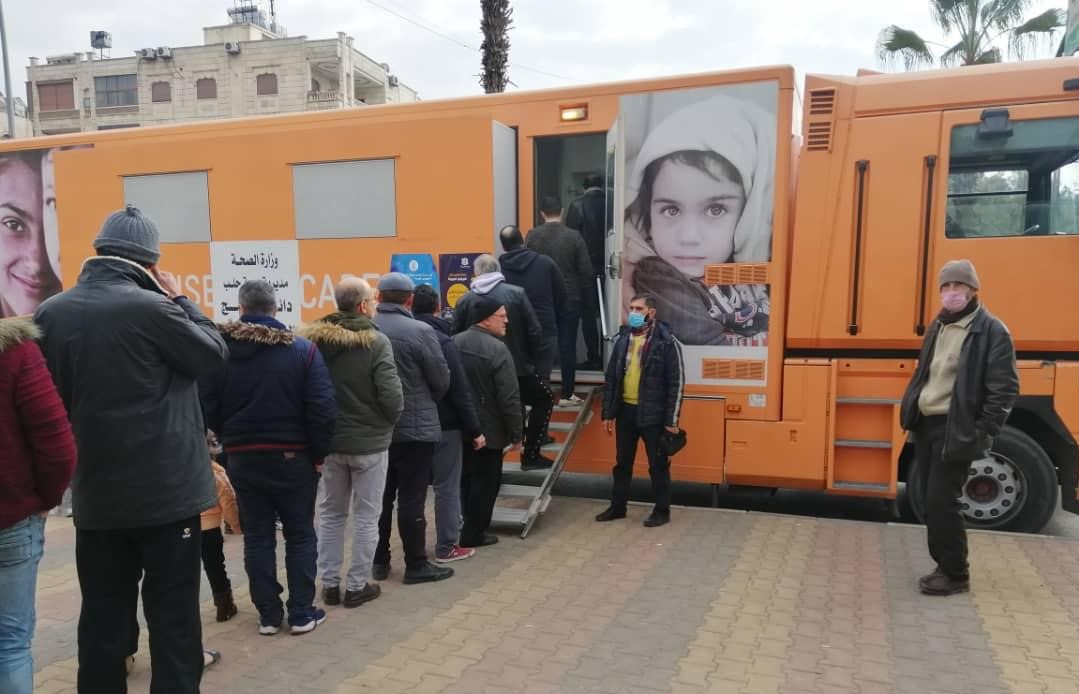
9 February 2022, Damascus – In coordination with the national health authorities, WHO and partners continue to bridge vaccine inequity and increase vaccination rates in the Syrian Arab Republic, aiming for the 40% national COVID-19 vaccination target by April this year.
Although the total number of COVID-19 vaccines delivered to the Syria through the COVAX Facility and bilateral agreements were sufficient to cover 39% of the population as of 27 January 2022, the percentage of fully vaccinated Syrians remains as low as 5%.
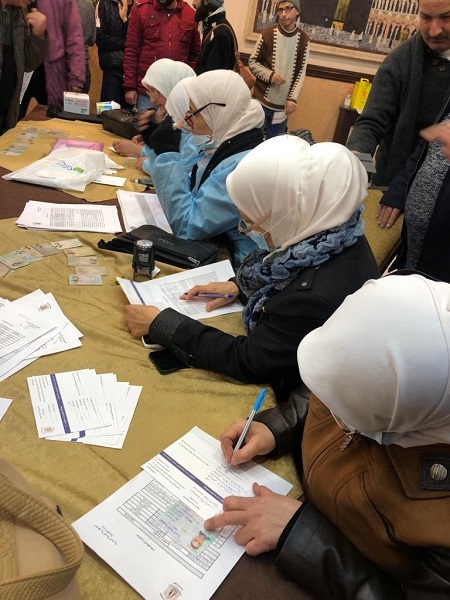 Data registration at Damascus Mosque
Data registration at Damascus Mosque
“At this critical time, all stakeholders should team up to help build people’s confidence in vaccines,” said Dr Akjemal Magtymova, Head of Mission and WHO Representative in the Syrian Arab Republic. “With Omicron and other variants threatening lives, getting vaccinated and adhering to preventive measures is the only solution. Vaccines are safe, effective and free,” Dr Magtymova added.
With WHO supporting the operating costs of vaccine administration, vaccination is now offered in 962 fixed vaccination sites: 39 hospitals and 923 primary health care centres.
Implementing various strategies to scale up vaccination campaigns in the country, the national health authorities are supporting special teams to conduct vaccination at government institutions, universities, and schools. Syrians can also receive the vaccine whether or not they are pre-registered through an online platform.
With an additional 1075 vaccination teams in static locations and 391 mobile teams deployed in all governorates – a total of 5162 health care workers and over 420 supervisors – the teams are operating at maximum capacity. The WHO-supported mobile teams are providing vaccination services at shopping centres, mosques, churches, ministries, and lately at the Syrian parliament. Moreover, mobile clinics have been stationed close to Immigration Directorates throughout the country to ease access to vaccination services. These significant efforts have been implemented hand-in-hand with regular vaccination campaigns at health centres all over the country.
“I was hesitant and would come up with different reasons to avoid getting the vaccine. However, when the mobile teams started providing vaccination services at the mall, I could not argue anymore, especially when I observed how professionally the services were rendered,” said one of the employees at Cham City centre in Damascus after receiving the vaccine.
WHO efforts to address vaccine hesitancy among the population include training skilled communication personnel and availing them to respond to people’s fears about COVID-19 vaccines. Seventy health care workers who were recently trained on how to address vaccination concerns based on the regional package are now applying new skills on the ground to increase uptake.
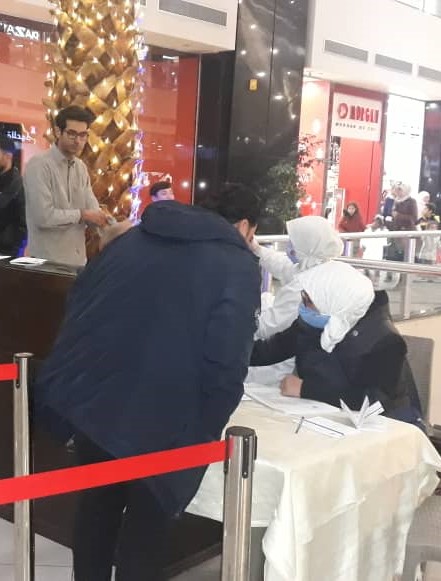 Mobile team at Cham City centre
Mobile team at Cham City centre
Furthermore, leading athletes, actors, writers and other influencers, as well as line ministries and agencies, support the vaccination campaign through their respective channels.
WHO calls on COVAX and donors to continue supporting the vaccination efforts in Syria and enabling a timely provision and administration of vaccines to curb the COVID-19 pandemic and protect the lives of millions of Syrians.
MEDIA CONTACT:
Gulalek Soltanova
External Relations/Communications Officer
WHO Syria Office
Damascus, Syrian Arab Republic
+963 953 888 477
COVAX supply update on COVID-19 vaccination in Syria, 9 February 2022
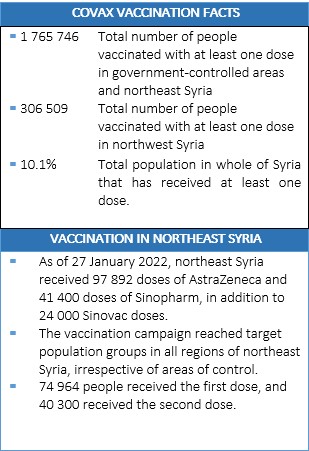
Summary
As of 5 February 2022, the total number of COVID-19 vaccines delivered to Syria through the COVAX Facility is 8 352 740, in addition to 2 713 640 doses received through bilateral agreements. These allocations are enough to cover 38% of the population. In the near future, over 3.7 million doses of COVID-19 vaccines are expected to be delivered through COVAX and will be sufficient to cover an additional 18.2% of the population.
In January 2021, the Ministry of Health received 151 200 doses of AstraZeneca/AZD1222 through COVAX donated by Japan, 1 million doses of Sinopharm donated by China, 368 640 doses of AstraZeneca by Oman, 302 400 doses of Johnson & Johnson donated by Spain, and 3 156 000 doses of Johnson & Johnson donated by Italy.
The last shipment received in northwest Syria was 832 800 doses of Johnson & Johnson donated by Italy on 23 December 2021.
The vaccines will be administered as part of the ongoing national vaccination campaign across the country.
Vaccination process
Vaccination activities continue across Syria at both 962 fixed health facilities and through 391 mobile medical teams in rural areas.
The Ministry of Health continues to exert efforts to make the vaccines available not only in designated health centres, but also in places where people visit the most. WHO supported mobile teams are offering vaccination services at shopping centres, mosques, churches, ministries, and lately at the Syrian parliament. In addition, mobile clinics have been stationed at the Directorate of Immigration throughout the country to ease access to vaccination services. These significant efforts have been implemented hand-in-hand with regular vaccination campaigns at health centres all over Syria.
In northeast Syria mobile teams were deployed starting from the second week of January 2022 to provide COVID-19 vaccination services, in addition to the 23 fixed teams in Al Hassakeh governorate. The vaccination process in Ar-Raqqa is ongoing through 2 fixed centres in Al-Raqqa city (Seif Al-Dawla), and Al-Tabaqa city (National Hospital). In eastern Deir-ez-Zor the vaccination campaign resumed through 14 mobile teams as of 17 January 2022 after being suspended for around 10 days pending the arrival of the new COVID-19 vaccine shipment.
Priority groups
As per the National Deployment and Vaccination Plan, the vaccination priority groups include all adults over 18 years of age with special emphasis on health care workers, the elderly, and people with co-morbidities.
According to the updated plan submitted on 2 February 2022, new targets have been set to cover 20% of the population by the end of the first quarter, 40% by the end of the second quarter and 70% by the end of 2022.
Challenges
The late arrival of vaccines makes it difficult for timely implementation of vaccination putting pressure on an already fragile health system. Overall vaccine hesitancy and lack of diversity of vaccine types delivered through COVAX along with the short expiry dates of some vaccine shipments create another challenge in achieving high vaccination rates. Vaccine uptake increased over the last quarter of 2021 due to intensified risk communication and community engagement efforts of the health authorities and partners.
